Don’t let the delicate powder-blue flowers fool you. Globe gilia (
Gilia capitata) is tough and one of the easiest annuals to grow. It loves hot sun and dry, rocky hillsides. I have it in sunny locations in my home garden — on the slopes of low mounds — where it self-sows and reliably returns each spring.
I imagine pretty little fairies playing among globe gilia’s sprightly blue flower heads as they open in the spring. Those little fairies aren’t real, of course, but all the wonderful insect pollinators are, and I give them first prize for their antics, weirdness and astounding beauty. Both tiny and large native bees sup on the delicious nectar of the little flower clusters, and many butterfly species visit globe gilia for the same reason.
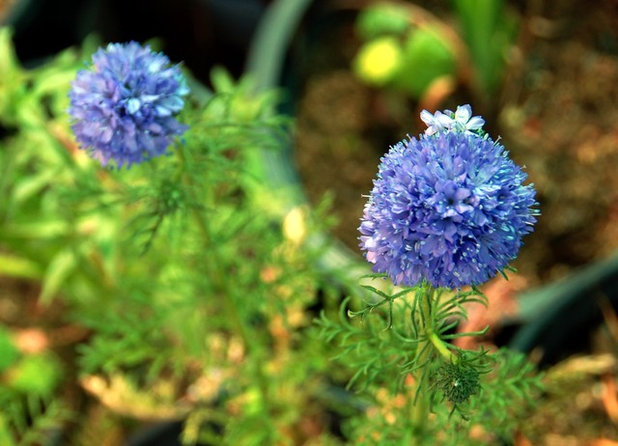
Pete Veilleux, East Bay Wilds
Botanical name: Gilia capitataCommon names: Globe gilia, blue thimble flower, blueheads
Origin: Native throughout California north to British Columbia and Idaho; part of the California Floristic Province
Natural habitat: Slopes in many plant communities
Where it will grow: Hardy to 0 degrees Fahrenheit (USDA zones 7a to 10b; find your zone)
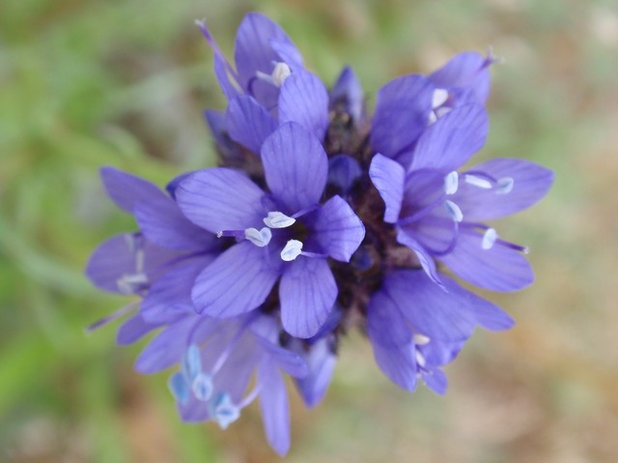
Tom Hilton
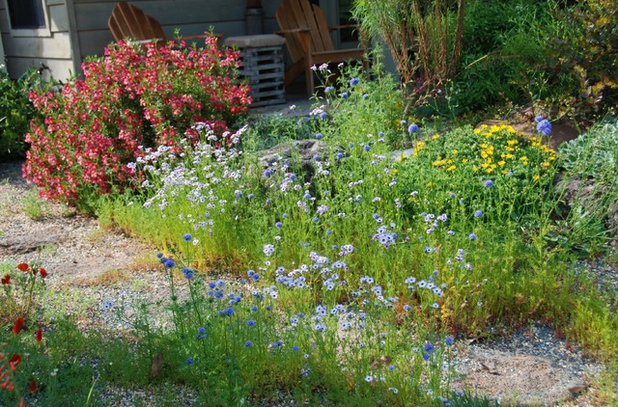
Pete Veilleux, East Bay Wilds
Shown: Globe gilia planted with Trish monkeyflower (
Mimulus ‘Trish’), San Bruno golden aster (
Heterotheca sessiliflora ssp
bolanderi) and bird’s-eye gilia (
Gilia tricolor)
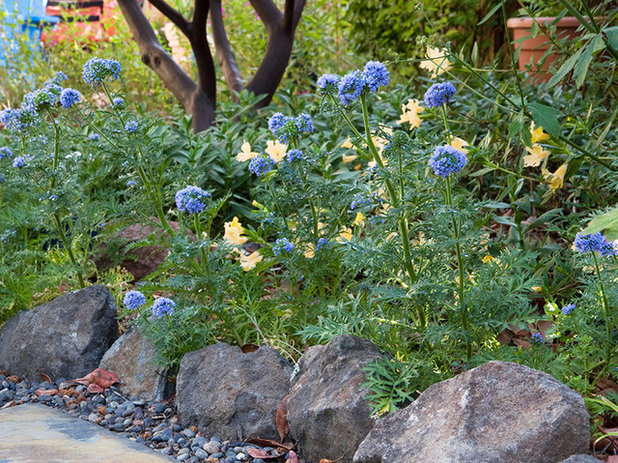
John J. Kehoe Photography
Water requirement: Low to average; no watering is also possible but will shorten the bloom period
Light requirement: Sun to partial shade
Soil: Adaptable; prefers good drainage
Mature size: 6 to 24 inches tall and wide, depending on sun, water and soil
Shown: Globe gilia planted in front of azalea monkey flower (
Mimulus aurantiacus var.
grandiflorus) and sentinel manzanita (
Arctostaphylos densiflora ‘Sentinel’)
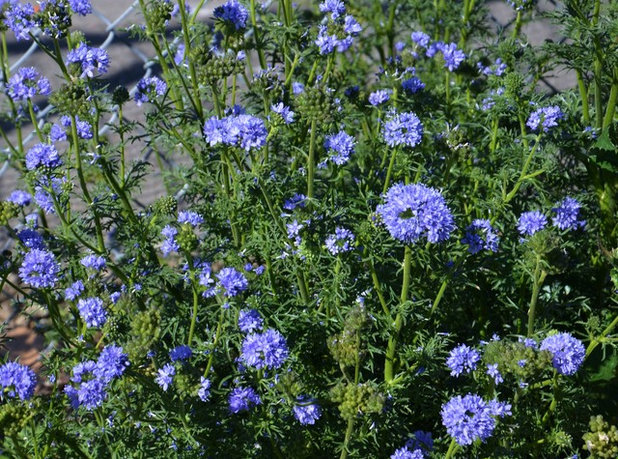
Pete Veilleux, East Bay Wilds
Benefits and tolerances: Tolerates drought and clay; beneficial to butterflies, native bees and honey bees
Seasonal interest: Exuberant, long bloom of light blue flower clusters and bright green fern-like leaves in spring and summer
When to plant: Plant or sow seeds in fall through spring; the later the planting, the later the bloom.
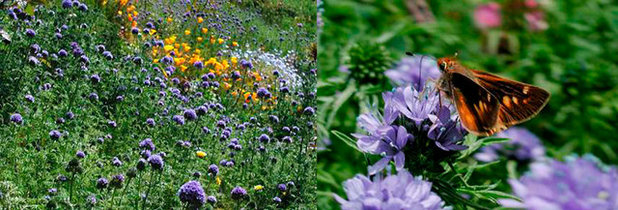
Bay Natives Nursery
Distinguishing traits and wildlife value. Globe gilia has charming 1- to 2-inch clusters of blue flowers. It is a superb nectar source for native bees, European honey bees and many species of butterflies, including the umber skipper butterfly (seen here).
In my opinion, globe gilia is a must for butterfly and pollinator gardens. And I’m not the only one who thinks so. It is also highly recommended by the authors of the new book
California Bees & Blooms: A Guide for Gardeners and Naturalists for its long bloom and the many pollinators who love it.
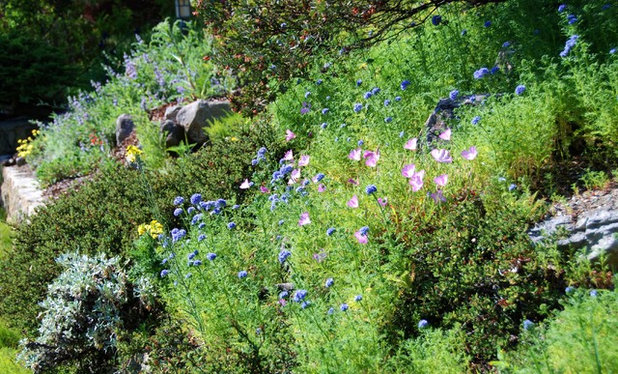
Pete Veilleux, East Bay Wilds
How to use it. Spread seeds in the fall for an early spring bloom, or wait until spring to sow (and water) for a glorious summer show.
Globe gilia looks gorgeous with other spring- and summer-blooming annuals with similar growing needs, such as California poppy (
Eschscholzia californica), tidy tips (
Layia platyglossa) and clarkia (
Clarkia spp), like these ruby chalice clarkia (
Clarkia rubicunda).
It makes a great cut flower and works well in containers.
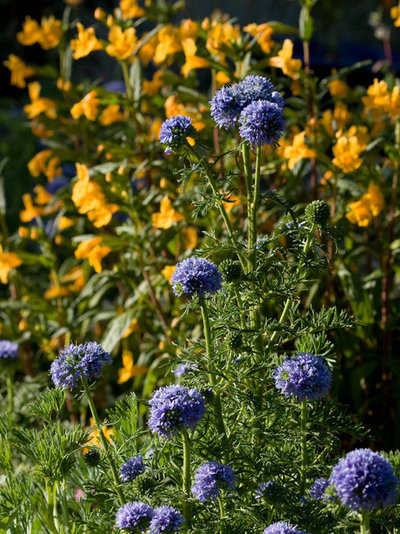
John J. Kehoe Photography
Planting notes. This annual is nearly care-free. Self-sowing plants can find the most interesting places to seed themselves, so a little cleanup in spring will keep the garden from being overgrown by enthusiastic annuals. I often thin young plants to maintain 6- to 9-inch spacing.
Shown: Globe gilia in front of sticky monkey flower (
Mimulus aurantiacus)





